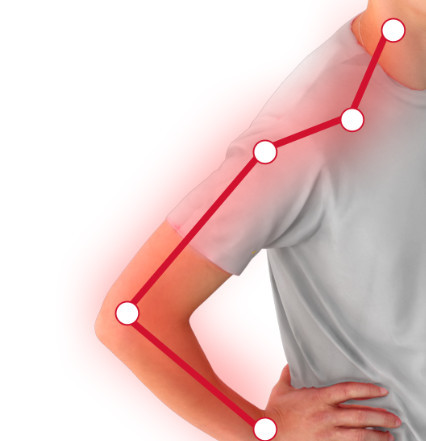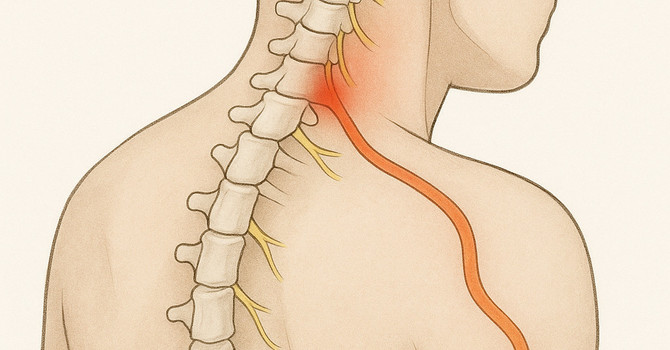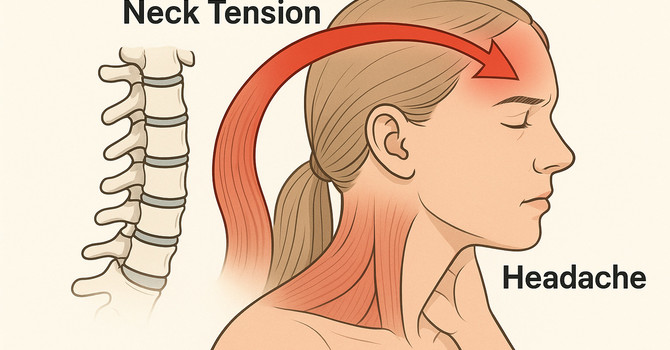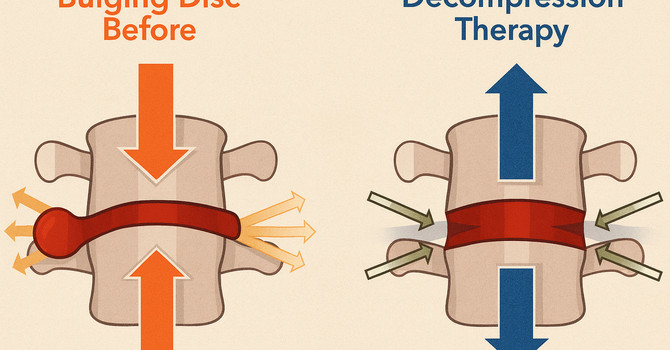What Are Arm Dermatomes?
Dermatomes are areas of skin that correspond to specific nerve roots. Each spinal nerve exits the spinal column at a particular vertebra and supplies sensation to distinct patches of skin along the body. In the cervical spine, the C5 through T1 nerves govern specific sections of the shoulder, arm, and hand:
- C5: lateral shoulder and upper arm
- C6: thumb and lateral forearm
- C7: middle finger
- C8: little finger and medial forearm
- T1: inner upper arm
When a nerve root is compressed, the symptoms often manifest along these dermatomes, helping pinpoint the location of the issue within the spine. For example, pain radiating down the thumb side of the arm can indicate a C6 nerve root problem. This precise mapping allows healthcare providers to target the exact cause of the discomfort.
How Cervical Disc Bulges Affect Arm Dermatomes
The cervical spine’s discs act as cushions between the vertebrae, absorbing shocks and allowing flexibility. Over time, these discs can begin to degenerate, bulging or herniating into the spinal canal. A bulging or herniated disc can press on the posterior nerve roots exiting the cervical spine, causing irritation and inflammation of the nerve. When this happens, you may experience what’s known as radicular pain, which radiates down the nerve path into the arm and fingers.
Radicular pain follows the pattern of dermatomes, making it easier to identify the affected nerve root. The pain is often sharp, shooting, or burning and can be accompanied by numbness or tingling. This pain pattern indicates that a cervical disc bulge is compressing a specific nerve root and disrupting its function.
Comprehensive Exam for Radicular Pain: Testing Sensory Dermatomes, Myotomes, and Reflexes
When evaluating arm pain potentially caused by nerve compression, a thorough examination is essential. During your visit, I conduct several tests to ensure an accurate diagnosis:
-
Sensory Dermatome Testing: By evaluating sensation in the skin across various dermatomes, I can determine if certain areas are more sensitive, numb, or tingling. Loss of sensation in a specific dermatome can indicate nerve root compression at a particular cervical level.
-
Myotome Testing: Myotomes are muscle groups controlled by specific spinal nerve roots. I’ll assess muscle strength in the arm and shoulder to identify any weakness, which could point to nerve compression affecting motor function. For example, weakness in elbow flexion or wrist extension might suggest an issue at the C6 nerve root.
-
Deep Tendon Reflex Testing: Reflex tests, such as the biceps or triceps reflex, help evaluate the health of nerve pathways. Absent or diminished reflexes can indicate nerve root compression, while hyperactive reflexes may suggest upper motor neuron or spinal cord involvement. Reflex testing helps rule out upper motor neuron lesions, ensuring that the focus remains on diagnosing a potential cervical disc bulge.
These diagnostic tests allow me to rule out other neurological conditions, such as upper motor neuron lesions or spinal cord compression, and confirm that the radicular pain stems from a cervical disc bulge.
Chiropractic Care and Non-Invasive Spinal Decompression: Effective Solutions for Radicular Pain
Once radicular pain is identified and attributed to a cervical disc bulge, chiropractic care offers effective, non-invasive treatment options. At our office in Olathe, I use a combination of chiropractic adjustments and cervical spinal decompression to relieve pressure on the nerve roots.
-
Chiropractic Adjustments: Gentle adjustments help realign the spine, reducing strain on the cervical discs and facilitating the healing process. Realignment can alleviate pain, decrease inflammation, and improve mobility, allowing you to return to daily activities without discomfort.
-
Cervical Spinal Decompression: This non-invasive treatment applies targeted traction to the cervical spine, creating space between the vertebrae. By gently stretching the spine, spinal decompression alleviates pressure on the affected nerve root and helps relieve pain. This treatment is particularly beneficial for patients with cervical disc bulges or herniations, as it creates the room necessary for discs to retract from the nerve.
Why Chiropractic Care Is a Great Choice for Radicular Pain
Chiropractic care is ideal for managing radicular pain because it addresses the root cause rather than merely masking symptoms. By targeting the underlying cervical disc bulge, chiropractic treatment and spinal decompression work together to relieve nerve compression, providing lasting pain relief and improved nerve function. Chiropractic care also avoids the need for invasive procedures, making it a safe and effective option for many patients.
Conclusion
Radicular pain in the arms is a frustrating and painful condition that can interfere with your daily life. However, by understanding the correlation between arm dermatomes and cervical disc bulges, you can see how targeted chiropractic care provides relief. At our Olathe chiropractic office, we conduct thorough exams, including dermatome, myotome, and reflex testing, to pinpoint the exact cause of your discomfort. Chiropractic adjustments and non-invasive spinal decompression are powerful tools that address the problem at its source, providing a path to recovery.
If you’re experiencing symptoms of radicular pain, I encourage you to schedule an appointment. Together, we can explore safe, non-invasive solutions that will relieve your pain and restore function to your cervical spine.




